SKF is applying expertise gained in various sectors including Formula One and Formula E racing to help the urban air mobility sector reach lift off.
The company is an event partner at GUAAS and also works in partnership with half a dozen urban air manufacturers, influencing both motor and architecture designs. SKF works with electric and hybrid propulsions systems and supports customer requirements in rotational and reciprocating environments, with a focus on tribology, predictive bearing wear mechanisms, lightweight material incorporation and condition monitoring.
As well as designing and manufacturing standard catalogue parts, semi-standard parts compliant with aerospace certification requirements and full aerospace parts, SKF also works as an engineering support partner within the aircraft development stages. Products include bearings, bushings, spherical plain bearings, composite rods and fittings, seals and elastomeric parts, condition monitoring and lubrication systems.
With customers facing unknown operating conditions before the sector gets off the ground, the team takes a flexible approach, fine tuning parts using data from test flights.
Team members from across SKF talked to FINN about some of the challenges and opportunities they are facing within the emerging sector:
- Jon Harris, SKF Aerospace Sales and Business Development
- Konstantinos Karras, SKF Aerospace Application Engineer
- Guy Miller, Key Account Manager SKF Racing
Firstly, can you outline your plans for GUAAS?
JH: “After conducting meetings with our customers over Microsoft Teams it will be great to meet them and talk them in person! We’ll be showing different types of technologies and how we can work with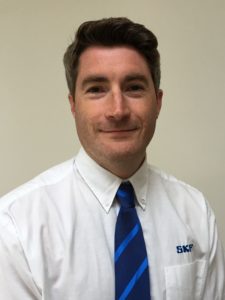 customers using our calculation tools.”
customers using our calculation tools.”
“The plan is to be able to take engineers through a scenario – for example, you want to increase your bearing life – we’ll go through the calculations and show them the tools that we can use to do that. We’ll be showing a broader picture of what SKF can offer. It won’t just be the aerospace team in attendance, we’ll have representatives from racing and automotive so we’ll be showing the full suite of products from SKF as a whole company.”
What do you think are the biggest issues to be addressed before the regional and urban air mobility sector takes off?
KK: “For mass adoption, the primary challenge is aircraft noise reduction – that’s one of the biggest problems that we’re seeing in terms of certification. These aircraft types have blades rotating at high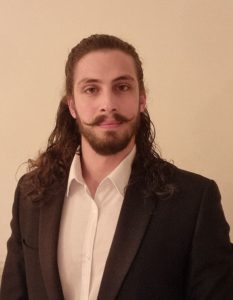 velocities which can cause significant noise issues. Therefore, quiet bearing operating will be a must in future aircraft iterations.”
velocities which can cause significant noise issues. Therefore, quiet bearing operating will be a must in future aircraft iterations.”
“A lot of these [urban air] customers are relatively new in the bearing world, so they require a lot of attention in terms of technical support, but it’s really refreshing to see customers being open to supplier design recommendations.”
“Sometimes when working with large OEMs (original equipment manufacturers), everything is hidden. We will receive a build-to-print drawing and the rest of the technical information is hidden. This is different when working with new star-ups as suppliers are able to influence the design of the general assembly in the early phases of design work.”
“It’s a new way of working within SKF Aerospace but we embrace this style of work as it brings greater cohesion between parties and can allow for better optimisation of the systems taking each other’s constraints and drivers into account from the start.”
Can you explain how the crossover between automotive and aerospace sectors benefits the urban air mobility sector?
KK: “There have been a number of technological developments within the SKF Industrial Electric Vehicle department, SKF Automotive and SKF Racing also. There’s a lot more cross departmental working, information sharing and product development activities that are being mutually developed between all SKF Business Units.”
“Of course, there are differences in terms of bearing certification and some operating conditions also differ in comparison to non-flying machinery – ie bearing orientation alteration during take-off and landing of eVTOL aircraft. These types of vehicles differ inherently in types of applications, but there’s strong overlap and a lot of great opportunities to work together.”
“There’s always been some crossover between automotive and aerospace, but the challenge is not only technical but commercial also. For example, SKF Aerospace bearings must be produced in aerospace accredited manufacturing sites. The volumes and quality requirements are also different, so a tailored approach is required.”
“Although, we are seeing for the first time a fluid and dynamic Aerospace sector and the biggest challenge is that parts are required in the short term. This is a challenging within an aerospace environment where lead times can be extensive. This leads us to work with in-stock items (Aerospace and Industrial) and in turn work with our UAM customers to define future bearing needs.”
“When it comes to commercial discussion with UAM customers, most are start-ups, and everything needs to be very reactive. It’s high paced, high energy and involve a lot of young engineers, who are really great to work with.”
JH: “SKF have one of the longest running partnerships in F1, sponsoring and working closely with Ferrari to develop bearing solutions for over 70 years – we also work within E Series motor racing. Those type of markets really push the boundaries of what bearings can do and that flows back into the technologies that we develop and capabilities we can pass on to the urban air and eVTOL markets.”
GM: “E Series is about pushing the boundaries of what’s possible. They’re chasing laptimes, but also reliability these days. All the big automotive manufacturers are there now and we’ve learned a huge amount, trying to chase every fraction of a second in time, which feeds into other parts of the business and closer collaboration within SKF as well.”
Do you think there is more collaboration today between engineers of land and air vehicles?
KK: “There is a large spill-over in terms of technical ability relevance when focusing on these new UAM customers. As the electrification market has largely been already developed within the Automotive sector, those developed skills are directly applicable to aerospace environments.”
“The biggest shock to the Industrial engineers, which have moved to the aerospace sector, will be when discussing certification standards. There is much higher quality and traceability scrutiny when focusing on airborne items and the certification bodies are expected to ‘open’ with much stricter requirements for these new propulsion type technologies.”
As well as noise, what do you think are the other big challenges which will need to be overcome within the sector?
GM: “These motors are more power dense so they’re required to be smaller and faster. That comes with its own challenges: very slow applications have a simple bearing arrangement and very high speed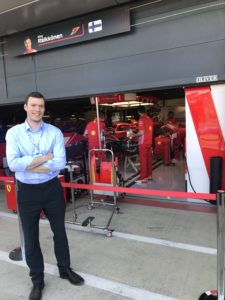 applications have a considerably more complex bearing arrangement.”
applications have a considerably more complex bearing arrangement.”
“There’s a lot of development to improve the speed rating of the more simple bearing arrangement, not just for technology purposes but for cost as well. So there’s this middle ground between extreme speed and high speed where we’re trying to develop more simple bearing arrangements to make them work.”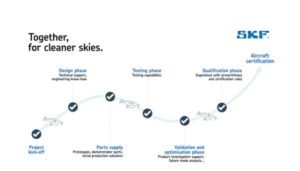
“A lot of that is coming from road vehicles, so lots of development on a particular bearing type, deep groove ball bearings, and the increase in the speed rating specifically for electric vehicles. There are parts already running on the road with those sort of new high speeds and no doubts that will then feed back into the aerospace.”
KK: “From an aerospace perspective, we’re also seeing a lot of requirements with regards to weight, so lightweight material usage is something we are developing within SKF. We have experience in developing and manufacturing bespoke aluminium bearings along with a range of composite fittings & transmission shafts so that is going to be a big advantage.”
“If we move away from bearing technology, battery technology is going to be a big factor, which will play a key developmental role for all the new players in the market.”
“Infrastructure development/creation will most certainly also come into the bigger picture. I am aware of discussions as to whether these types of vehicles are going to be incorporated into existing airports and the issues which come together with such integration. I believe there is a new VTOL aircraft base which is being developed in Coventry which is great to see.”
“One final point regarding these new aircraft types is that everything is electric and heavily software based. This gives a great opportunity for the vehicles to be heavily sensorised. Condition monitoring can play a key role in aircraft certification as there will be a strong focus on aircraft safety. Incorporating condition monitoring on these types of aircraft is something that can be made from the start.”
How has SKF adopted digitisation and how important will this be for the industry in future?
KK: “Digitisation is important from a traceability point of view and is a great method for information sharing between customers and SKF. We’ve started working with something called parametric design models, so the customer can essentially give us a list of digital bearing parameters and the bearing CAD models can be built in an automated fashion. Manufacturing drawings can be created automatically and therefore there is no human error.”
“We’re also continuing with our industry 4.0 roadmap. The vision is to have software systems where customers can log on and see exactly where the bearings are during manufacture. This is still in the very early stages, but it’s something that is within SKF’s scope.”
How do you think the MRO industry will adapt to support these new aircraft? 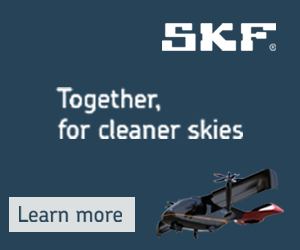
JH: “SKF is heavily involved in aeroengine MRO and is already actively maintaining main shaft and gearbox bearings. We’ll also be working with customers to extend their maintenance intervals to reduce costs: the last thing they want is to develop these vehicles and then can’t use them because they’re sat in the maintenance warehouse.”
“We work with customers to understand their requirements and how we can use our technologies to make their product last as long as possible without needing maintenance or putting in place condition monitoring or technologies allowing them to accurately understand when they need to do maintenance, rather than just defining a standard set of hours, say 50 hours, when you need to bring it in.”
How is SKF incorporating sustainability into the business?
JH: “This is one of the major targets for the Group, as well as contributing to sustainability physically, for example, by introducing weight saving products.”
“When a lot of your customers are working towards net zero by 2050, you’ve got to have similar targets – our group publicly announced our highly ambitious aim to achieve a fully carbon neutral footprint for our manufacturing operations by 2030 with the strategic focus Decarbonation in progress.”
Learn more on eAviation on SKF’s website https://www.skf.com/group/industries/eaviation

